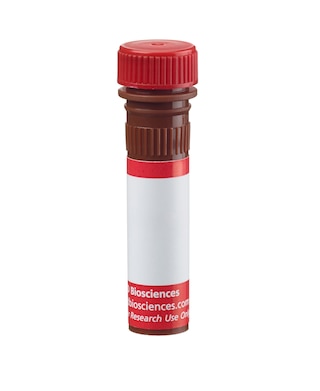-
Training
- Flow Cytometry Basic Training
-
Product-Based Training
- BD FACSDiscover™ S8 Cell Sorter Product Training
- Accuri C6 Plus Product-Based Training
- FACSAria Product Based Training
- FACSCanto Product-Based Training
- FACSLyric Product-Based Training
- FACSMelody Product-Based Training
- FACSymphony Product-Based Training
- HTS Product-Based Training
- LSRFortessa Product-Based Training
- Advanced Training
-
- BD FACSDiscover™ S8 Cell Sorter Product Training
- Accuri C6 Plus Product-Based Training
- FACSAria Product Based Training
- FACSCanto Product-Based Training
- FACSLyric Product-Based Training
- FACSMelody Product-Based Training
- FACSymphony Product-Based Training
- HTS Product-Based Training
- LSRFortessa Product-Based Training
- United States (English)
-
Change country/language
Old Browser
This page has been recently translated and is available in French now.
Looks like you're visiting us from {countryName}.
Would you like to stay on the current country site or be switched to your country?




Multiparameter flow cytometric analysis of LIR-6 (CD85i) expression on human peripheral blood leucocyte populations. Human peripheral blood was stained with either Alexa Fluor® 647 Mouse IgG2b, κ Isotype Control (Cat. No. 565378; Left Plots) or Alexa Fluor® 647 Mouse Anti-Human LIR-6 (CD85i) antibody (Cat. No. 566455; Right Plots). Erythrocytes were lysed with BD Pharm Lyse™ Lysing Buffer (Cat. No. 555899). Flow cytometric contour plots showing the correlated expression of LIR-6 (CD85i) (or Ig Isotype control staining) versus side light-scatter signals (SSC-A; Top Plots) or CD14 (Bottom Plots) were derived from gated events with the forward and side light-scatter characteristics of viable leucocytes or mononuclear cells, respectively. Flow cytometric analysis was performed using a BD LSRFortessa™ X-20 Flow Cytometer System.


BD Pharmingen™ Alexa Fluor® 647 Mouse Anti-Human LIR-6 (CD85i)

Regulatory Status Legend
Any use of products other than the permitted use without the express written authorization of Becton, Dickinson and Company is strictly prohibited.
Preparation And Storage
Product Notices
- This reagent has been pre-diluted for use at the recommended Volume per Test. We typically use 1 × 10^6 cells in a 100-µl experimental sample (a test).
- An isotype control should be used at the same concentration as the antibody of interest.
- Source of all serum proteins is from USDA inspected abattoirs located in the United States.
- Caution: Sodium azide yields highly toxic hydrazoic acid under acidic conditions. Dilute azide compounds in running water before discarding to avoid accumulation of potentially explosive deposits in plumbing.
- The Alexa Fluor®, Pacific Blue™, and Cascade Blue® dye antibody conjugates in this product are sold under license from Molecular Probes, Inc. for research use only, excluding use in combination with microarrays, or as analyte specific reagents. The Alexa Fluor® dyes (except for Alexa Fluor® 430), Pacific Blue™ dye, and Cascade Blue® dye are covered by pending and issued patents.
- Alexa Fluor® is a registered trademark of Molecular Probes, Inc., Eugene, OR.
- Alexa Fluor® 647 fluorochrome emission is collected at the same instrument settings as for allophycocyanin (APC).
- For fluorochrome spectra and suitable instrument settings, please refer to our Multicolor Flow Cytometry web page at www.bdbiosciences.com/colors.
- Please refer to www.bdbiosciences.com/us/s/resources for technical protocols.
Companion Products





The 586326 monoclonal antibody specifically recognizes Leukocyte Immunoglobulin-like Receptor 6 (LIR-6) which is also known as CD85 antigen-like family member I (CD85i). LIR-6 (CD85i) is a type I transmembrane glycoprotein that is encoded by LILRA1 (Leukocyte immunoglobulin like receptor A1) and belongs to the LILR family within the Ig gene superfamily. A LIR-6a isoform with four extracellular Ig-like domains and a LIR-6b isoform with two extracellular Ig-like domains have been reported. LIR-6 (CD85i) has a short cytoplasmic domain and a charged arginine residue within its transmembrane region which interacts with Fc Receptor gamma (FcR?) and allows it to serve as an activating receptor. It is expressed on monocytes and B cells and at lower levels on dendritic cells and NK cells. LIRs interact with HLA class I ligands and contribute to the regulation of immune responses. LIR-6 preferentially binds to HLA-C free heavy chains and to HLA-B27. The 586326 antibody crossreacts with human CD85j recombinant protein in a direct ELISA but does not crossreact with human CD85a, CD85c, CD85d, CD85e, CD85h, nor CD85k recombinant proteins.
Development References (3)
-
Borges L, Hsu ML, Fanger N, Kubin M, Cosman D. A family of human lymphoid and myeloid Ig-like receptors, some of which bind to MHC class I molecules. J Immunol. 1997; 159(11):5192-5196. (Biology). View Reference
-
Brown D, Trowsdale J, Allen R. The LILR family: modulators of innate and adaptive immune pathways in health and disease. Tissue Antigens. 2004; 64(3):215-225. (Biology). View Reference
-
Lichterfeld M, Yu XG. The emerging role of leukocyte immunoglobulin-like receptors (LILRs) in HIV-1 infection. J Leukoc Biol. 2012; 91(1):27-33. (Biology). View Reference
Please refer to Support Documents for Quality Certificates
Global - Refer to manufacturer's instructions for use and related User Manuals and Technical data sheets before using this products as described
Comparisons, where applicable, are made against older BD Technology, manual methods or are general performance claims. Comparisons are not made against non-BD technologies, unless otherwise noted.
For Research Use Only. Not for use in diagnostic or therapeutic procedures.
Report a Site Issue
This form is intended to help us improve our website experience. For other support, please visit our Contact Us page.